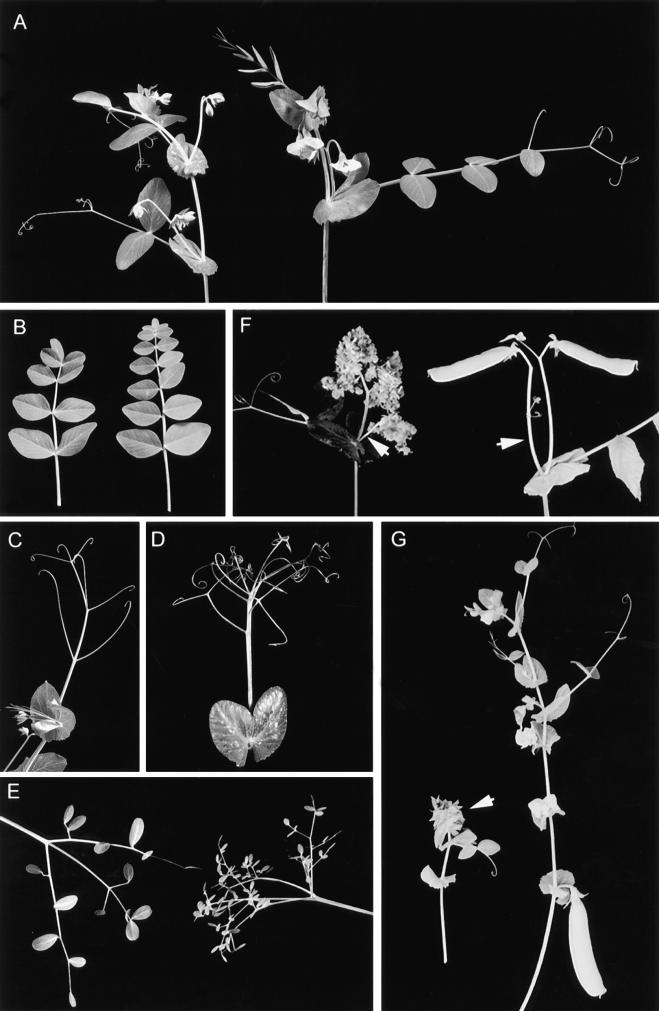Figure 4.
Interactions between stp-4 and Mutations Affecting Leaf and Inflorescence Development in Pea.
In each case, the stp-4 mutant is at left and the corresponding Stp segregant is at right.
(A) Primary inflorescences from an stp-4 single mutant and its wild-type sibling illustrating the effect of stp-4 on leaf development at the onset of flowering. The leaf from the mutant possesses only two leaflets and four tendrils, whereas five leaflets and five tendrils are present on the corresponding wild-type leaf.
(B) The most complex leaves born on tl stp-4 and tl Stp siblings. The tl mutant converts tendrils to leaflets. Fewer leaflets were produced on the stp-4 tl leaves than on the Stp tl leaves.
(C) and (D) af stp-4 and af Stp (JI1195) adult leaves, respectively, showing the reduction in leaf complexity caused by stp-4 on the af phenotype.
(E) Leaves from similar nodes of the triple mutant stp-4 af tl. These also show a simplification of the leaf by the stp-4 mutation when compared with the pleiofila, Stp af tl leaf form. In addition to reducing the ramification of the af tl leaf, addition of the stp-4 allele also resulted in an increase in leaflet size.
(F) Mature, primary inflorescences from stp-4 det and Stp det siblings. The det mutation results in the conversion of the primary inflorescence into a secondary inflorescence bearing flowers, which produce pods. This phenotype is also seen in the stp-4 background. The converted inflorescence is indicated by an arrow in each case.
(G) Secondary inflorescences from stp-4 veg2-2 and Stp veg2-2 plants. The proliferation of the secondary inflorescence that results from the veg2-2 mutation is apparent in the stp-4 mutant background; however, the secondary inflorescences terminate in a sepaloid flower (arrow).

